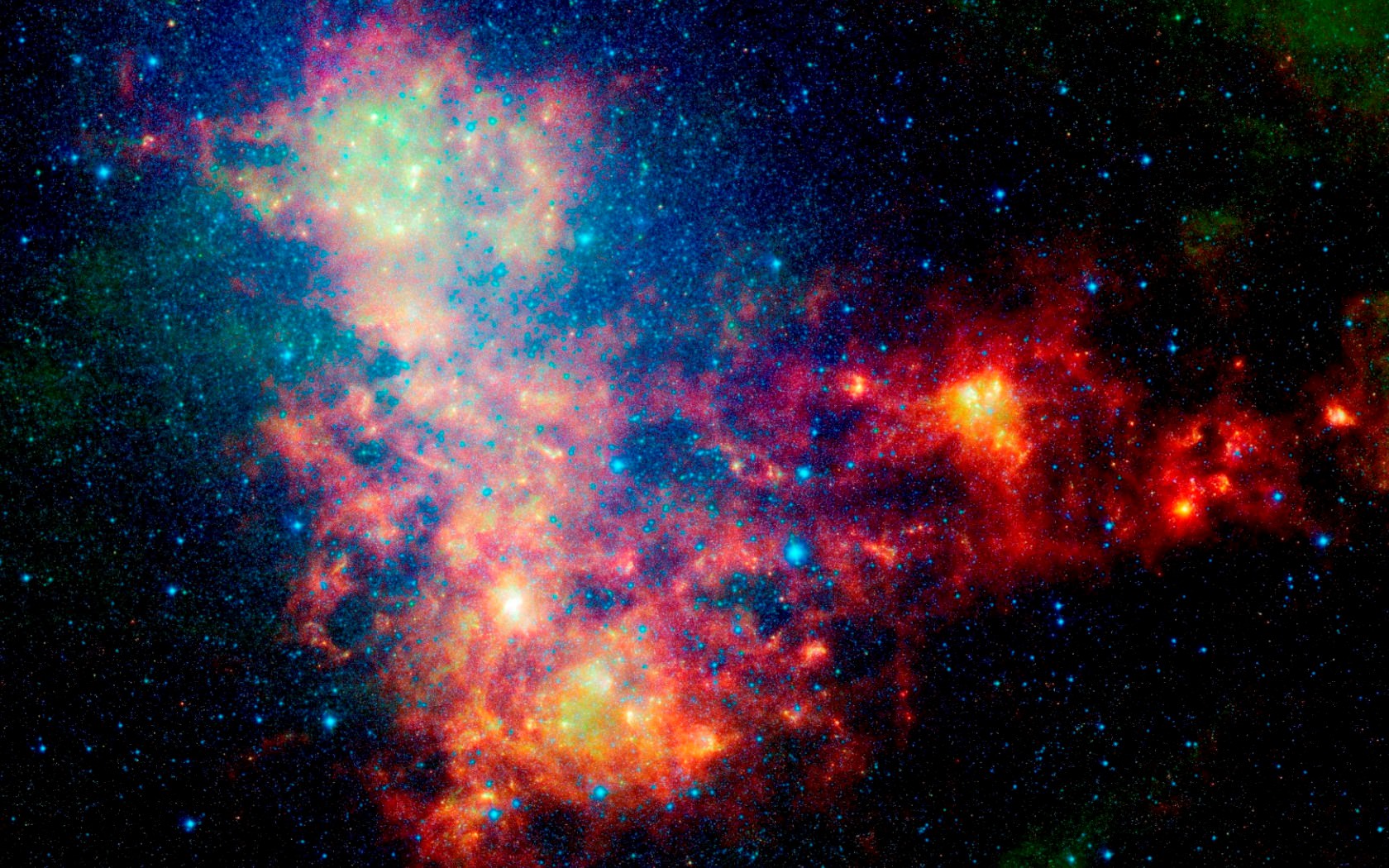When galaxies collide, stars are thrown from orbits, spiral arms are stretched and twisted, and now scientists say galaxies ring like a bell long after the cosmic crash.
A team of astronomers from the United States and Canada say they have heard echoes of that ringing, possible evidence of a galactic encounter 100 million years ago when a small satellite galaxy or dark matter object passed through the Milky Way Galaxy; close to our position in the galaxy, as if a rock were thrown into a still pond causing the stars to bounce up and down on the waves. Their results were published in the Astrophysical Journal Letters.
“We have found evidence that our Milky Way had an encounter with a small galaxy or massive dark matter structure perhaps as recently as 100 million years ago,” said Larry Widrow, professor at Queen’s University in Canada. “We clearly observe unexpected differences in the Milky Way’s stellar distribution above and below the Galaxy’s midplane that have the appearance of a vertical wave — something that nobody has seen before.”
Astronomers took observations from about 300,000 nearby stars in the Sloan Digital Sky Survey. Stars move up and down at 20-30 kilometers per second while see-sawing around the galaxy at 220 kilometers per second. By comparison, the International Space Station putters around Earth at 7.71 kilometers per second; Voyager 1, the fastest man-made object, currently is leaving the solar system at about 17.46 kilometers per second. Widrow and colleagues at the University of Kentucky, The University of Chicago and Fermi National Accelerator Laboratory found that the positions of nearby stars is not quite as regular as previously thought. The team noticed a small but statistically significant difference in the distribution of stars above and below the midplane of the Milky Way.
“Our part of the Milky Way is ringing like a bell,” said Brian Yanny, of the Department of Energy’s Fermilab. “But we have not been able to identify the celestial object that passed through the Milky Way. It could have been one of the small satellite galaxies that move around the center of our galaxy, or an invisible structure such as a dark matter halo.”
Susan Gardner, professor of physics at the University of Kentucky added, “The perturbation need not have been a single isolated event in the past, and it may even be ongoing. Additional observations may well clarify its origin.”
Other possibilities considered for the variations were the effect of interstellar dust or simply the way the stars were selected in the survey. But as those events failed to explain fully the observations, the astronomers began to explore possible recent events in the history of the galaxy.
More than 20 visible satellite galaxies circle the Milky Way. Invisible satellites made up of dark matter, hypothetical matter that cannot be seen but is thought to make up a majority of the mass of the Universe, might also orbit our galaxy. Scientists believe that most of the mass orbiting the galaxy is in the form of dark matter. Using computer simulations to explore the effects of a small galaxy or dark matter structure passing through the disk of the Milky Way, the scientists developed a clearer picture of the see-saw effects they were seeing.
In terms of the nine-billion lifetime of the Milky Way Galaxy, the effects are short-lived. This part of the galaxy has been “ringing” for 100 million years and will continue for 100 million years more as the up-and-down motion dissipates, say the astronomers – unless we are hit again.
Image caption: The Small Magellanic Cloud is one of 20 visible satellite galaxies that orbit the Milky Way Galaxy. Astronomers report that a smaller counterpart or dark matter object passed through the Milky Way near our position about 100 million years ago.


Here is the free (PDF) paper:
Galactoseismology: Discovery of Vertical Waves in the Galactic Disk.
Am wondering if there’s be a connection between the formation of these ‘wave(s)’ and the cloud of gas now approaching *.Sag. A at high speed? Remnant of a ‘recent’ collision? As reported by Nancy in these pages a couple days ago.
Not nearly the same mass in the Sag A cloud as that of the MW. You need something on the order of the disk crossection to set it ringing.
As for expectations, it happened 100 million years ago the passing mass is most likely long gone as the galaxy is thin. So you would look outside the MW.
The key words in my question are: “Remnant of a ‘recent’ collision?” Meaning, the cloud approaching Sag. A* may not have been noticed as an orbiting galactic collision remnant prior to these observations, but as it is now approaching periapse (closest approach to Sag A*) the cloud’s velocity has increased making it ‘stand out’ against the background/foreground stars. This object may now contain only a small percentage of it’s original mass after consecutive passes…
I see. But such small remnants can’t be tied down to the collision dwarf. And again, the passing mass is long gone, meaning remnants would be too.
At this juncture you are clearly pattern searching here. But if you hear hoof steps – think horses, not zebras. The MW has way many indigenous gas clouds, including ones that it has soaked up as it has soaked up dwarf galaxies. So those are the likeliest explanation for a gas cloud.
It doesn’t matter that it is a Sag A approaching gas cloud either. Which by the way is why it stands out velocity wise, it has nothing to do with what sourced it. (Why should it have, btw? It would imply reversing causality for gravity.)
Proper motion studies of the stars in the galactic halo have shown possible links to galactic collision remnants. Perhaps one of those ‘star flows’ can be corroborated?